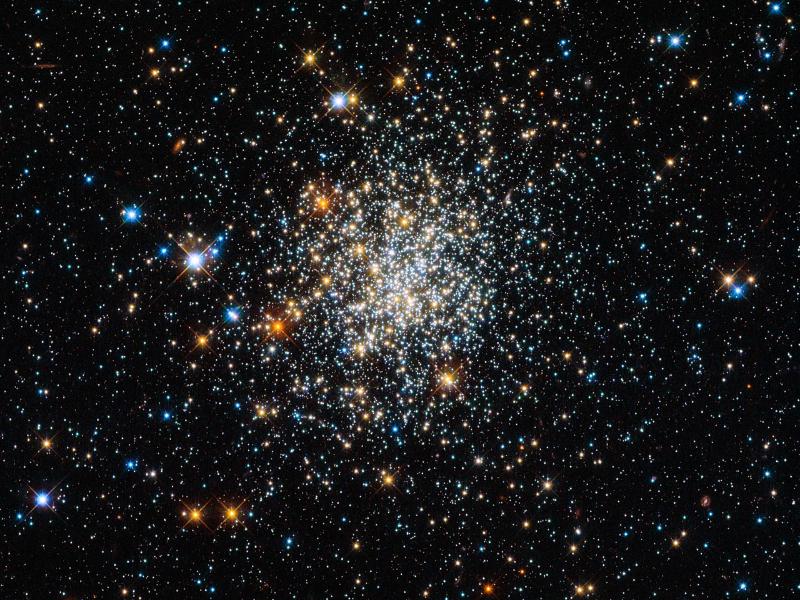
NGC 411, l’amas ouvert qui ressemble à s’y méprendre à un amas globulaire.
Contrairement à ce que les apparences suggèrent, NGC 411 photographié ici par le télescope spatial Hubble, n’est pas un amas globulaire. Au nombre de 150 dans la périphérie de notre galaxie, ceux-ci concentrent plusieurs dizaines, voire même pour certains, plusieurs centaines de milliers d’étoiles. La plupart ont le double de l’âge du Soleil soit 10 milliards d’années et ont vu grandir notre Voie Lactée.
NGC 411 est à l’opposé de ces grappes compactes. C’est un amas ouvert qui appartient à la galaxie voisine du Petit Nuage de Magellan. Un essaim de plusieurs milliers d’étoiles très jeunes, nées au sein d’un nuage de gaz et de poussières, il y a plus ou moins 1 milliard d’années. Ses étoiles s’éloignent progressivement les unes des autres, se libèrent des forces qui les retiennent.
Afficher et/ou télécharger l’image en haute résolution (7,4 Mb).
Crédit photo : ESA/NASA/Hubble.

